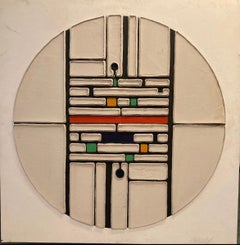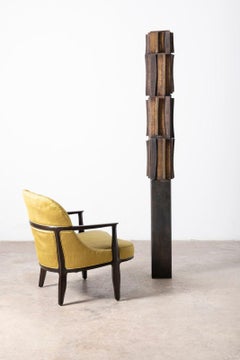Questions & Answers
Our trusted network of 1stDibs sellers answer common questions
What is Peter Max best known for?
1 Answer
Peter Max is best known for producing vibrant, bold paintings that draw inspiration from psychedelic and pop art. His famous works like Without Borders, Blushing Beauty, Better World and Love are popular contemporary wall art and are often sold as prints and posters. Shop a selection of Peter Max art on 1stDibs.
1stDibs ExpertMarch 22, 2022
Related Questions
- Where is Peter Max from?1 Answer
- Who is Peter Max?1 Answer
- Where was Peter Max born?1 Answer
- What media did Peter Max use?1 Answer
- What kind of art does Peter Max do?1 Answer
Shop for Paul Maxwell Art on 1stDibs
Geometric Abstract Cast Paper Print in Soft Earth Tones Textured Signed Art
By Paul Maxwell
Located in Austin, TX
23 x 22 inch.
Handmade Paper, Textured Lithograph.
Signed in Pencil: Bottom Right.
Numbered in Pencil: Bottom Left "111/150"
A meditative and serene, abstract piece made of a combin...
Category
Mid-20th Century Abstract Abstract Prints
Materials
Handmade Paper, Lithograph
“Geometric 3D Design“
By Paul Maxwell
Located in Warren, NJ
This is an paul maxwell original artwork painting.
47 3/4 by 48 3/8 inches
Weight
34 lbs
Condition
with stains throughout, areas of cracking and separation between canvas and rais...
Category
20th Century Paintings
Materials
Oil
Paul Maxwell Rare Sand Cast Bronze & Wood Brutalist Totem Sculpture 1967
By Paul Maxwell
Located in Dallas, TX
Paul Maxwell Rare Sand Cast Bronze & Wood Brutalist Totem Sculpture (1967, Commissioned)
A striking and rare example of Paul Maxwell’s early sculptural work, this monumental totem wa...
Category
Mid-20th Century Modern Abstract Sculptures
Materials
Bronze
Large Modern Abstract Cast Stencil Painting Paul Maxwell Mod Constructivist Neon
By Paul Maxwell
Located in Surfside, FL
Paul E. Maxwell (1925–2015)
This is a unique painting on either paper or canvas. It is framed.
Framed 46 X 34 sheet 41 X 29 inches
Hand signed and dated.
This can be hung either hori...
Category
20th Century Abstract Expressionist Abstract Paintings
Materials
Acrylic
Large Modern Abstract Cast Stencil Painting Paul Maxwell Mod Constructivist Neon
By Paul Maxwell
Located in Surfside, FL
Paul E. Maxwell (1925–2015)
This is a unique painting on either paper or canvas. It is framed in a gold toned metal frame
Framed 46 X 34 sheet 41 X 29 inches
Hand signed and dated.
T...
Category
20th Century Abstract Expressionist Abstract Paintings
Materials
Acrylic
Abstract Silkscreen by Paul Maxwell
By Paul Maxwell
Located in Long Island City, NY
Artist: Paul Maxwell, American (1925 - 2015)
Title: Untitled - Snake Skin (Red)
Year: circa 1978
Medium: Serigraph, signed and numbered in pencil
Edition: 100
Size: 27 x 39 in. (68.5...
Category
1970s Abstract Abstract Prints
Materials
Screen

